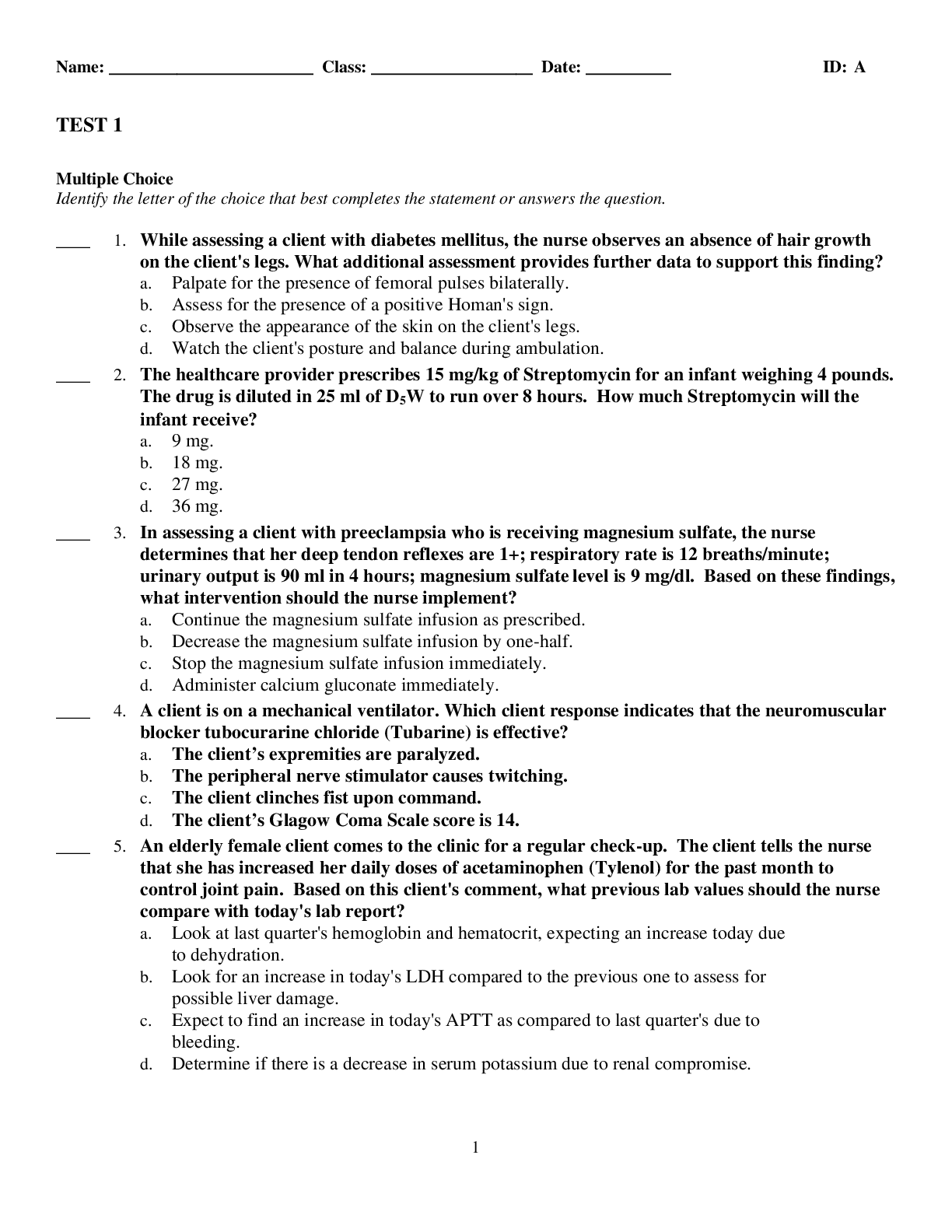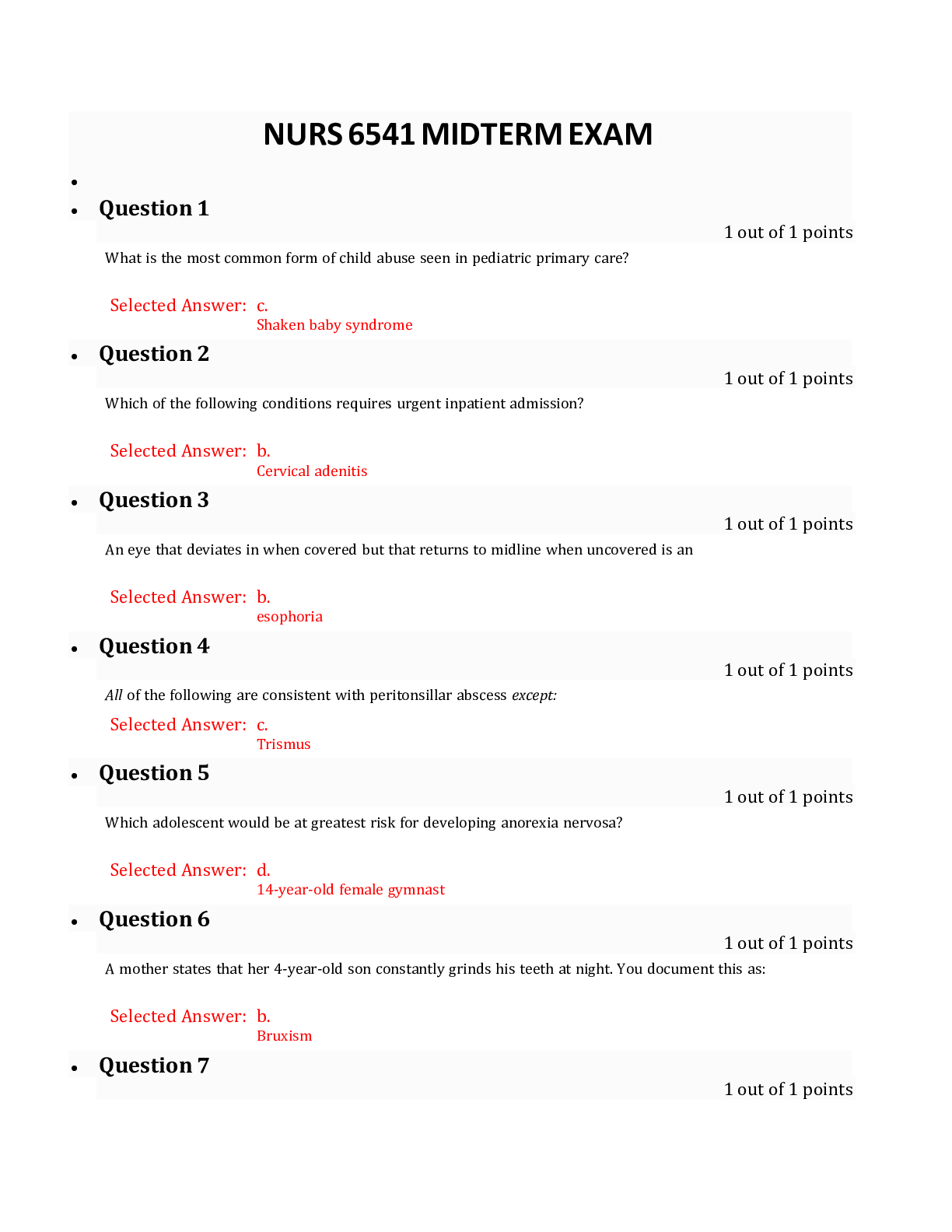c16 CNURSING 295 - Questions and Answers (Latest Version)
Document Content and Description Below
N295 ch 16 MULTIPLE CHOICE 1. The primary purpose of the ciliated mucous membrane in the nose is to: 2. The projections in the nasal cavity that increase the surface area are called the... : 3. The nurse is reviewing the development of the newborn infant. Regarding the sinuses, which statement is true in relation to a newborn infant? 4. The tissue that connects the tongue to the floor of the mouth is the: 5. The salivary gland that is the largest and located in the cheek in front of the ear is the _________ gland. 6. In assessing the tonsils of a 30 year old, the nurse notices that they are involuted, granular in appearance, and appear to have deep crypts. What is correct response to these findings? 7. The nurse is obtaining a health history on a 3-month-old infant. During the interview, the mother states, “I think she is getting her first tooth because she has started drooling a lot.” The nurse’s best response would be: 8. The nurse is assessing an 80-year-old patient. Which of these findings would be expected for this patient? 9. The nurse is performing an oral assessment on a 40-year-old Black patient and notices the presence of a 1 cm, nontender, grayish-white lesion on the left buccal mucosa. Which one of these statements is true? This lesion is: 10. While obtaining a health history, a patient tells the nurse that he has frequent nosebleeds and asks the best way to get them to stop. What would be the nurse’s best response? 11. A 92-year-old patient has had a stroke. The right side of his face is drooping. The nurse might also suspect which of these assessment findings? 12. While obtaining a health history from the mother of a 1-year-old child, the nurse notices that the baby has had a bottle in his mouth the entire time. The mother states, “It makes a great pacifier.” The best response by the nurse would be: 13. A 72-year-old patient has a history of hypertension and chronic lung disease. An important question for the nurse to include in the health history would be: 14. The nurse is using an otoscope to assess the nasal cavity. Which of these techniques is correct? 15. The nurse is performing an assessment on a 21-year-old patient and notices that his nasal mucosa appears pale, gray, and swollen. What would be the most appropriate question to ask the patient? 16. The nurse is palpating the sinus areas. If the findings are normal, then the patient should report which sensation? 17. During an oral assessment of a 30-year-old Black patient, the nurse notices bluish lips and a dark line along the gingival margin. What action would the nurse perform in response to this finding? 18. During an assessment of a 20-year-old patient with a 3-day history of nausea and vomiting, the nurse notices dry mucosa and deep vertical fissures in the tongue. These findings are reflective of: 19. A 32-year-old woman is at the clinic for “little white bumps in my mouth.” During the assess-ment, the nurse notes that she has a 0.5 cm white, nontender papule under her tongue and one on the mucosa of her right cheek. What would the nurse tell the patient? 20. A 10 year old is at the clinic for “a sore throat that has lasted 6 days.” Which of these findings would be consistent with an acute infection? 21. Immediately after birth, the nurse is unable to suction the nares of a newborn. An attempt is made to pass a catheter through both nasal cavities with no success. What should the nurse do next? 22. The nurse notices that the mother of a 2-year-old boy brings him into the clinic quite frequently for various injuries and suspects there may be some child abuse involved. During an inspection of his mouth, the nurse should look for: 23. The nurse is assessing a 3 year old for “drainage from the nose.” On assessment, a purulent drainage that has a very foul odor is noted from the left naris and no drainage is observed from the right naris. The child is afebrile with no other symptoms. What should the nurse do next? 24. During an assessment of a 26 year old at the clinic for “a spot on my lip I think is cancer,” the nurse notices a group of clear vesicles with an erythematous base around them located at the lip-skin border. The patient mentions that she just returned from Hawaii. What would be the most appropriate response by the nurse? 25. While performing an assessment of the mouth, the nurse notices that the patient has a 1-cm ulceration that is crusted with an elevated border and located on the outer third of the lower lip. What other information would be most important for the nurse to assess? 26. A pregnant woman states that she is concerned about her gums because she has noticed they are swollen and have started bleeding. What would be an appropriate response by the nurse? 27. A 40-year-old patient who has just finished chemotherapy for breast cancer tells the nurse that she is concerned about her mouth. During the assessment the nurse finds areas of buccal mucosa that are raw and red with some bleeding, as well as other areas that have a white, cheesy coating. The nurse recognizes that this abnormality is: 28. The nurse is assessing a patient in the hospital who has received numerous antibiotics and notices that his tongue appears to be black and hairy. In response to his concern, what would the nurse say? 29. The nurse is assessing a patient with a history of intravenous drug abuse. In assessing his mouth, the nurse notices a dark red confluent macule on the hard palate. This could be an early sign of: 30. A mother brings her 4-month-old infant to the clinic with concerns regarding a small pad in the middle of the upper lip that has been there since 1 month of age. The infant has no health prob-lems. On physical examination, the nurse notices a 0.5-cm, fleshy, elevated area in the middle of the upper lip. No evidence of inflammation or drainage is observed. What would the nurse tell this mother? 31. A mother is concerned because her 18-month-old toddler has 12 teeth. She is wondering if this is normal for a child of this age. The nurse’s best response would be: 32. When examining the mouth of an older patient, the nurse recognizes which finding is due to the aging process? 33. When examining the nares of a 45-year-old patient who has complaints of rhinorrhea, itching of the nose and eyes, and sneezing, the nurse notices the following: pale turbinates, swelling of the turbinates, and clear rhinorrhea. Which of these conditions is most likely the cause? 34. When assessing the tongue of an adult, the nurse knows that an abnormal finding would be: 35. The nurse is performing an assessment. Which of these findings would cause the greatest concern? 36. A patient has been diagnosed with strep throat. The nurse is aware that without treatment, which complication may occur? 37. During a checkup, a 22-year-old woman tells the nurse that she uses an over-the-counter nasal spray because of her allergies. She also states that it does not work as well as it used to when she first started using it. The best response by the nurse would be: 38. During an oral examination of a 4-year-old Native-American child, the nurse notices that her uvula is partially split. Which of these statements is accurate? 39. A patient comes into the clinic complaining of facial pain, fever, and malaise. On examination, the nurse notes swollen turbinates and purulent discharge from the nose. The patient also com-plains of a dull, throbbing pain in his cheeks and teeth on the right side and pain when the nurse palpates the areas. The nurse recognizes that this patient has: 40. A woman who is in the second trimester of pregnancy mentions that she has had “more nosebleeds than ever” since she became pregnant. The nurse recognizes that this is a result of: MULTIPLE RESPONSE 1. The nurse is teaching a health class to high-school boys. When discussing the topic of using smokeless tobacco (SLT), which of these statements are accurate? Select all that apply. 2. During an assessment, a patient mentions that “I just can’t smell like I used to. I can barely smell the roses in my garden. Why is that?” For which possible causes of changes in the sense of smell will the nurse assess? Select all that apply. [Show More]
Last updated: 1 year ago
Preview 1 out of 14 pages
Instant download

Buy this document to get the full access instantly
Instant Download Access after purchase
Add to cartInstant download
Also available in bundle (1)

CNURSING 295
CHAPTER 23 NEUROLOGIC SYSTEM,CHAPTER 21 ABDOMINAL ASSESSMENT,N295 EXAM 4,N295 EXAM 3,c22,c21,c19,c18,c17,c16,c15,c14,c13,c12,c11,c10,c9,c8,c7,c6,c5,c4,c2,c1
By Ajay25 3 years ago
$75
24
Reviews( 0 )
Document information
Connected school, study & course
About the document
Uploaded On
Jan 17, 2021
Number of pages
14
Written in
Additional information
This document has been written for:
Uploaded
Jan 17, 2021
Downloads
0
Views
61


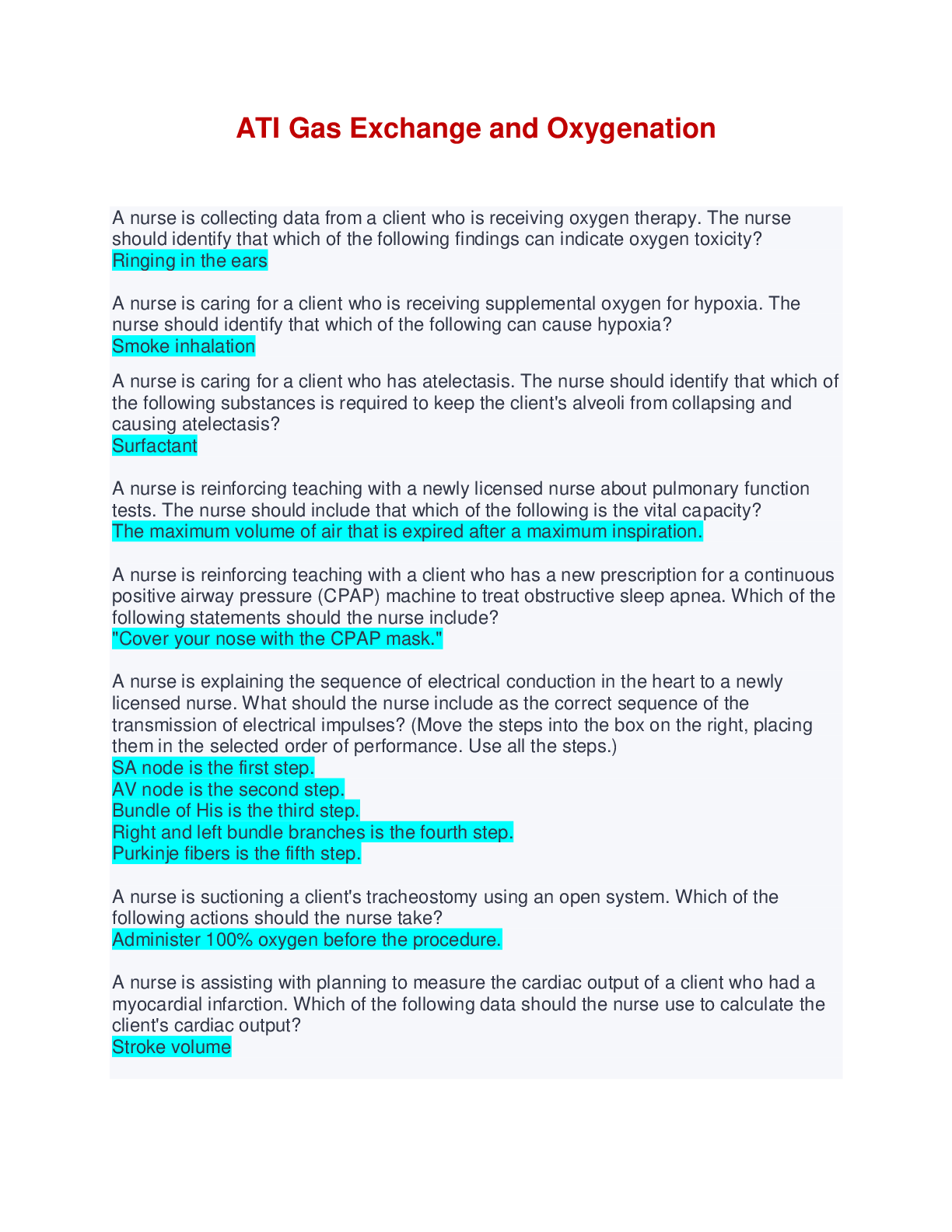






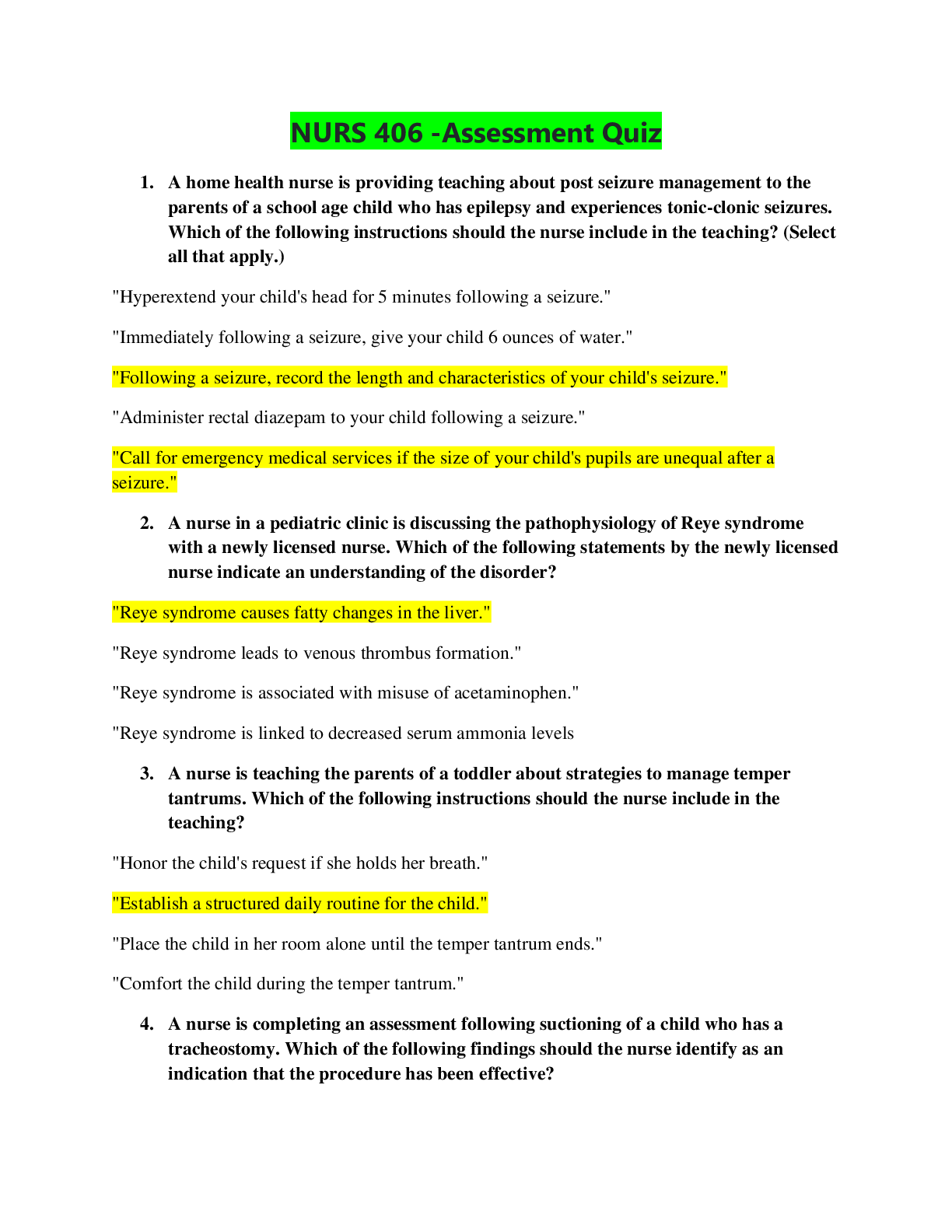



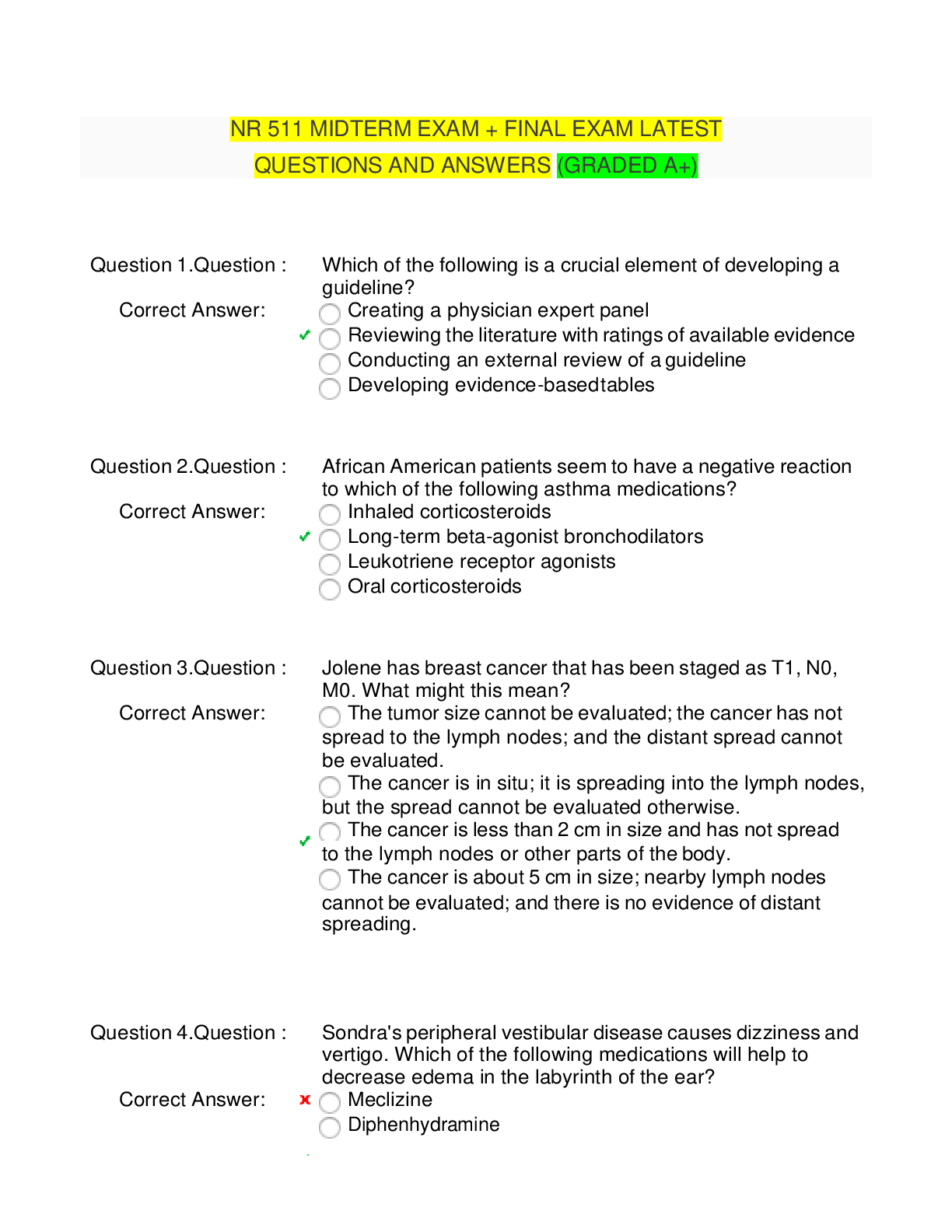

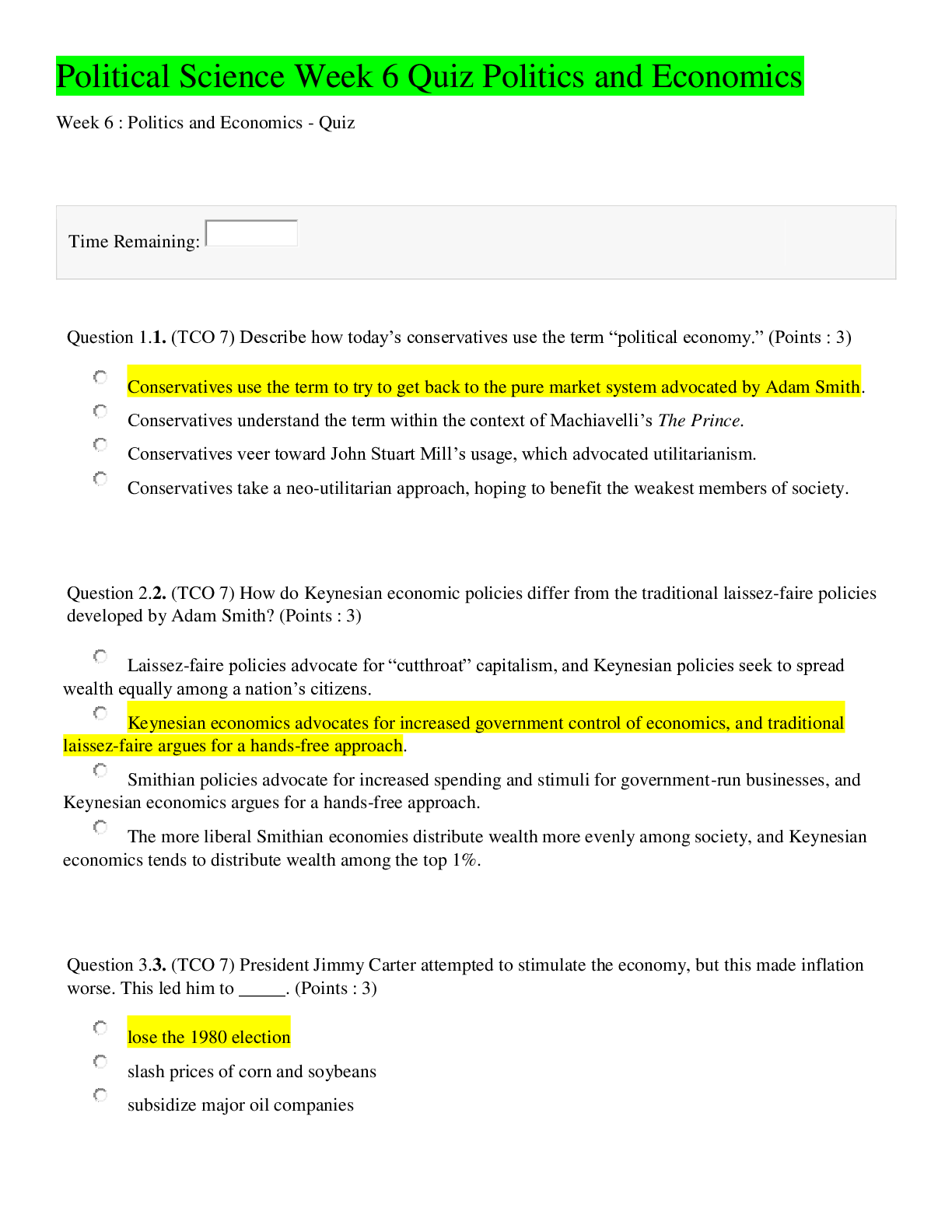
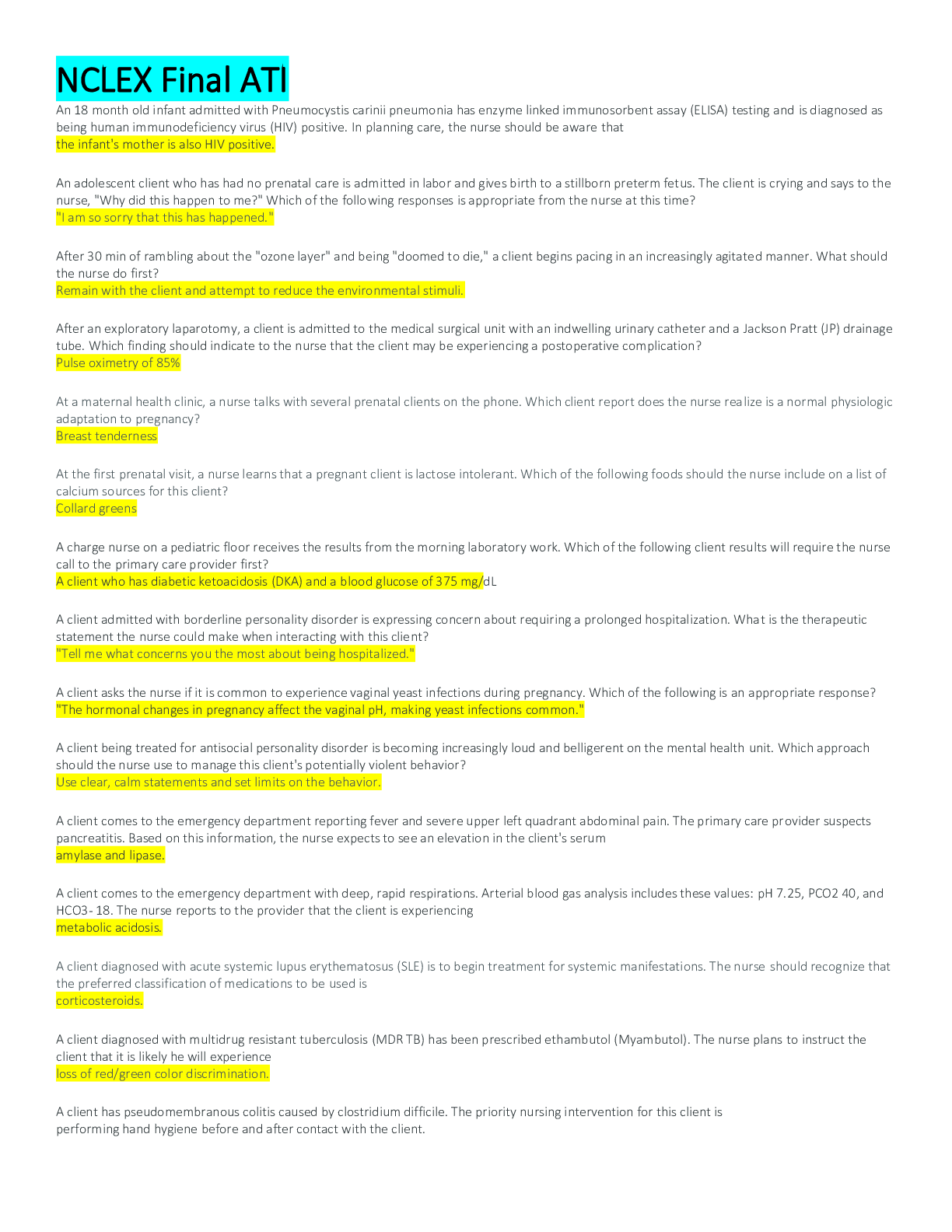
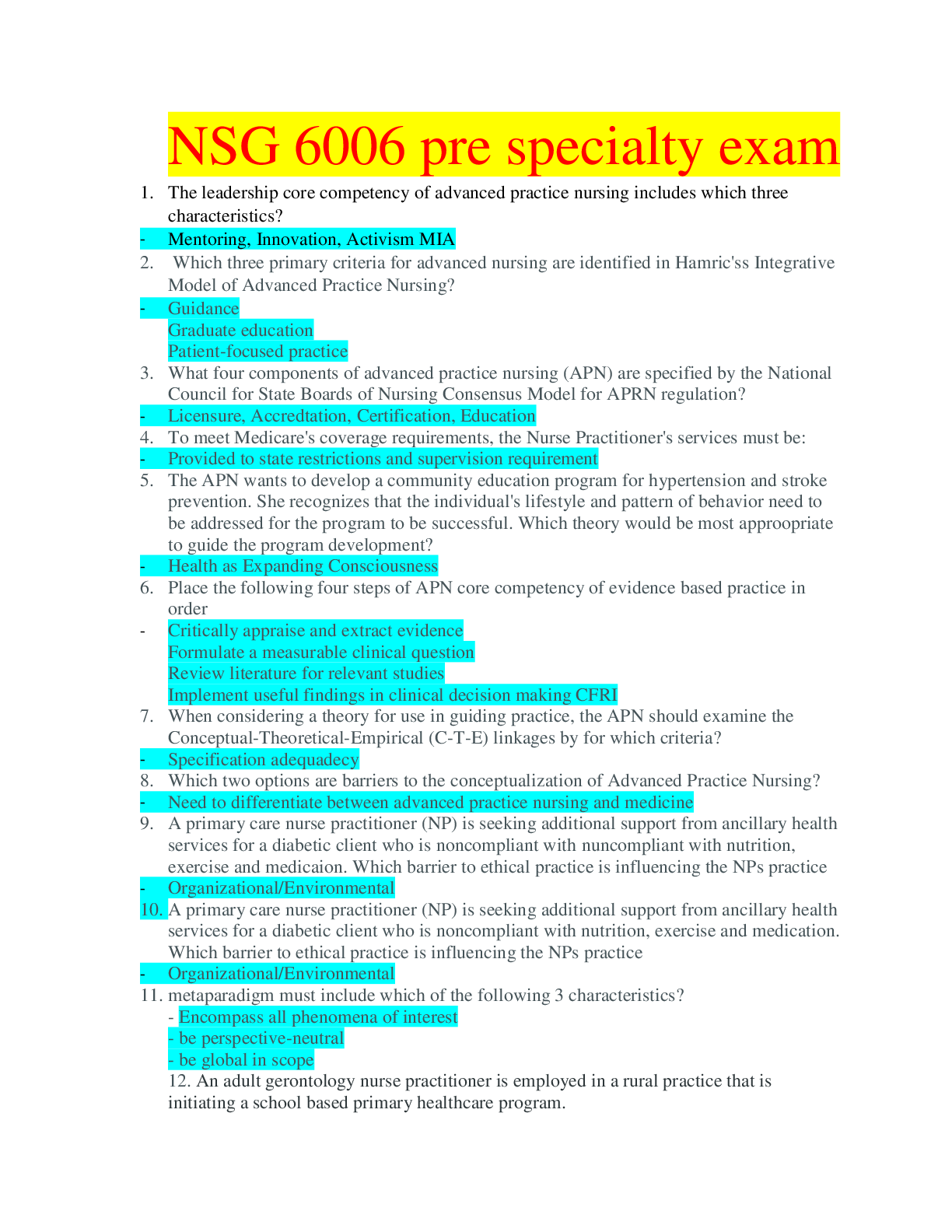
.png)
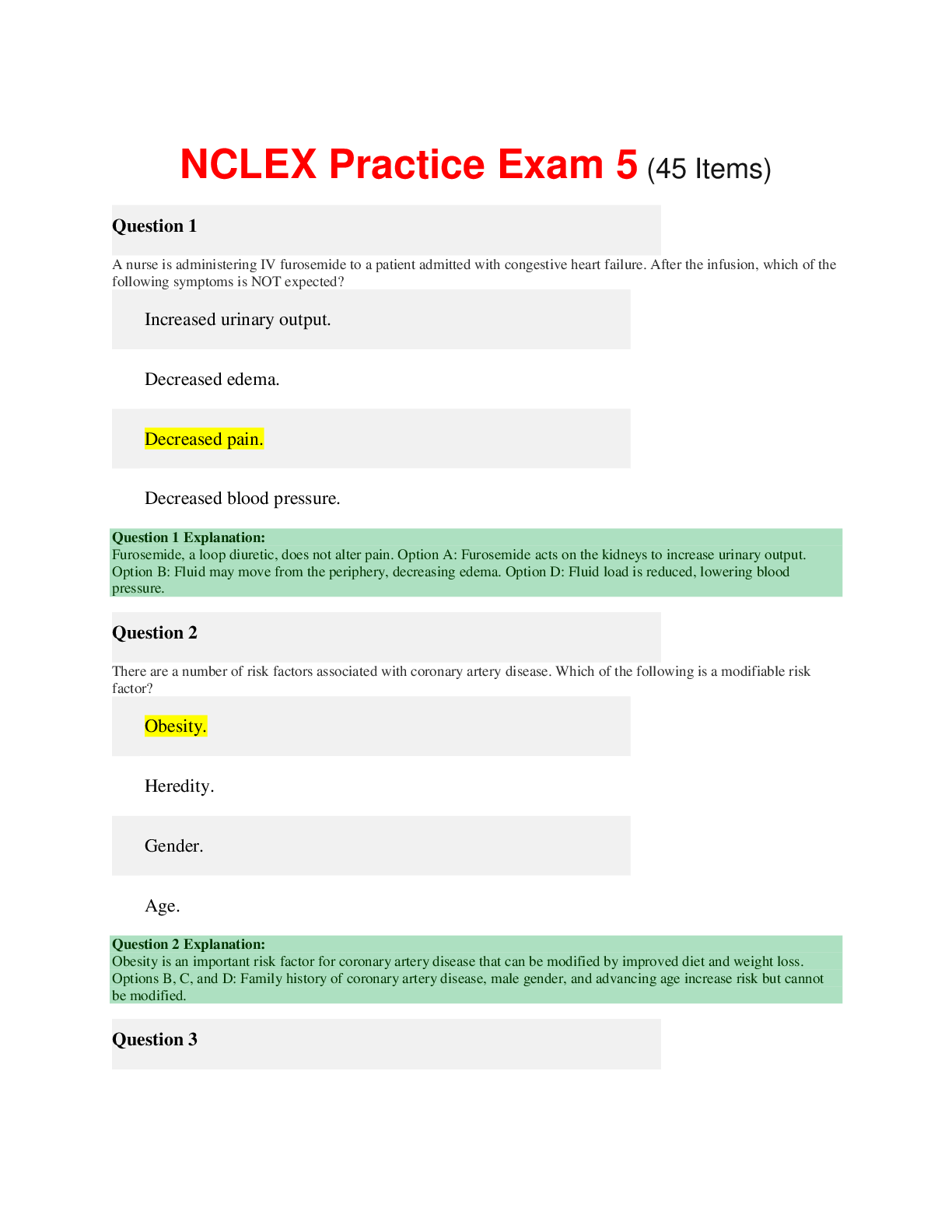
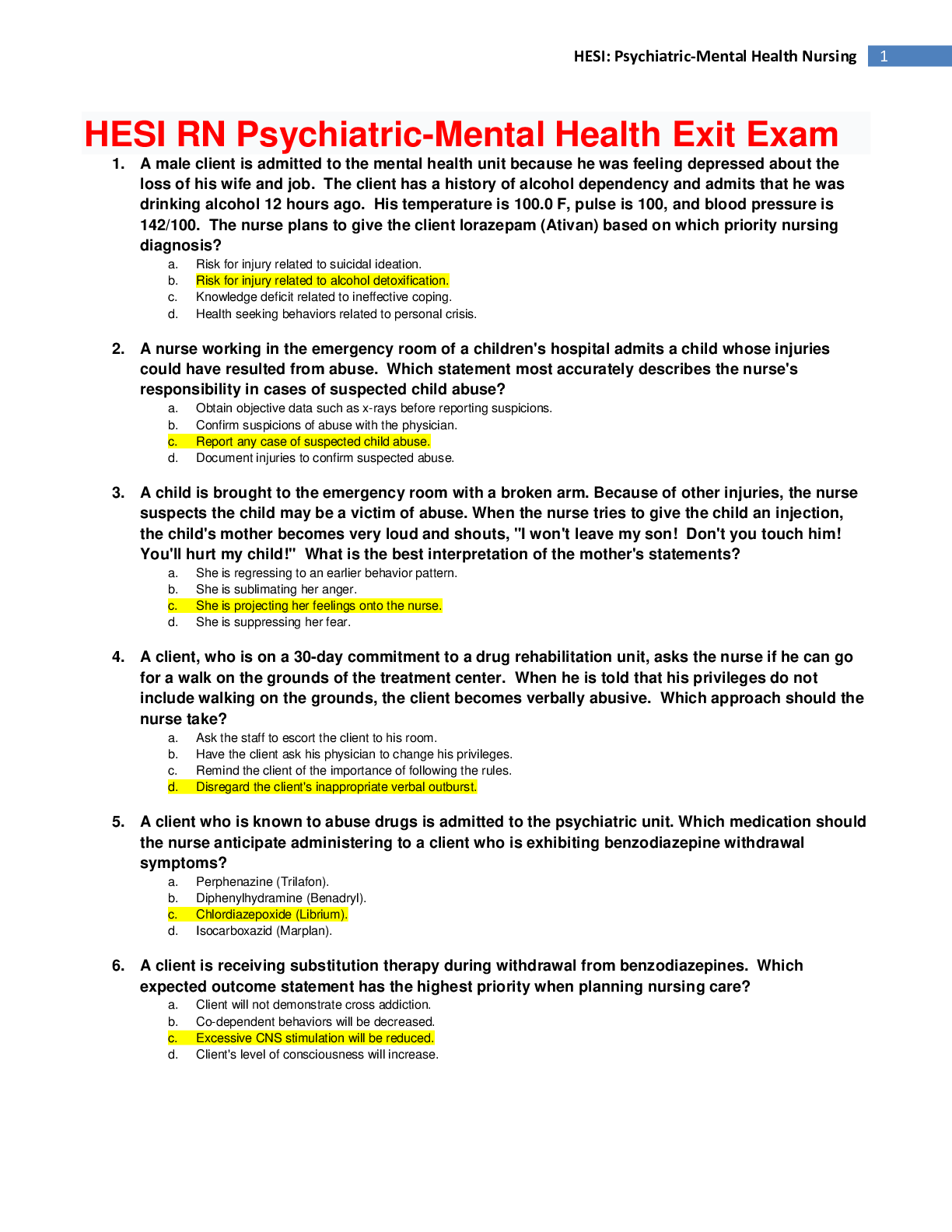
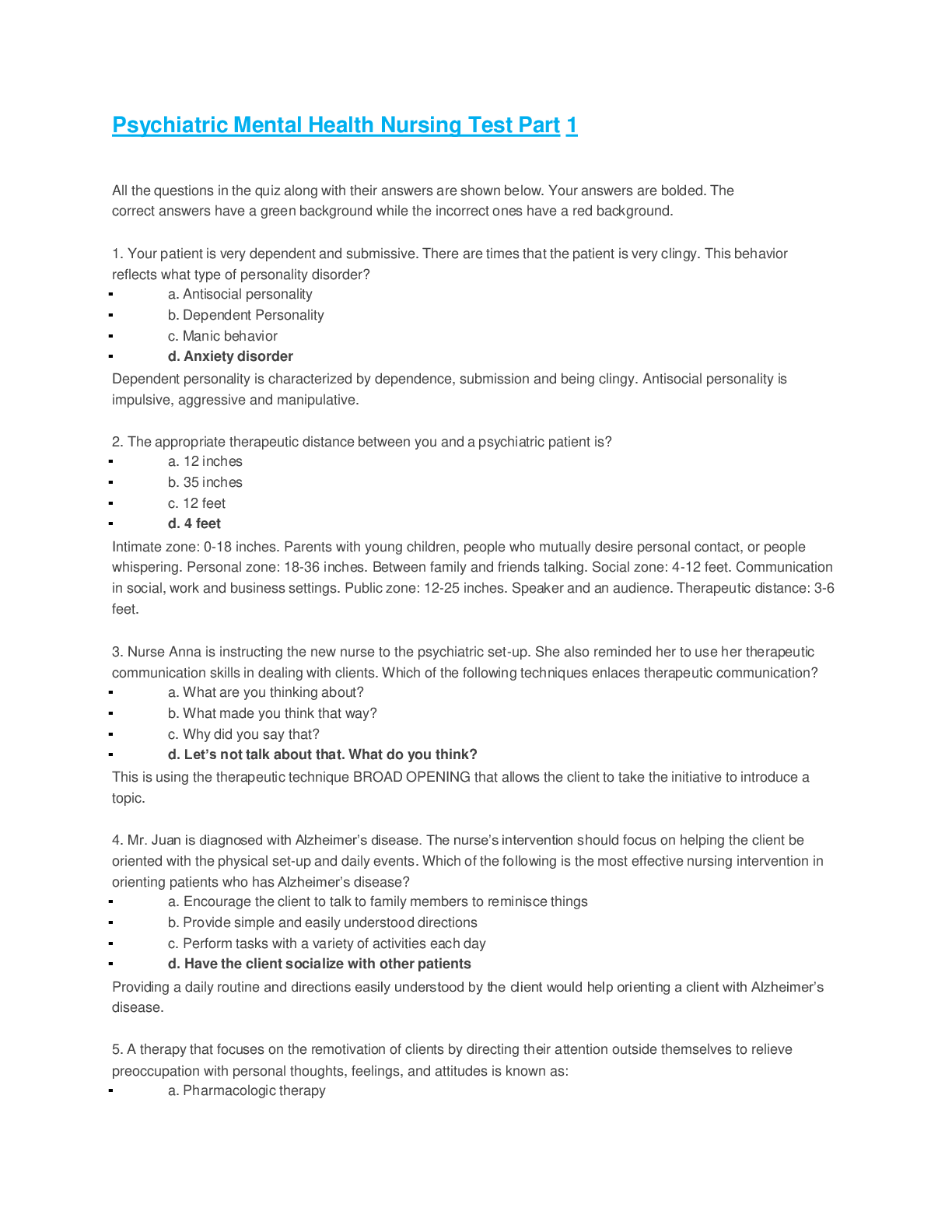
 – South university Savannah.png)
